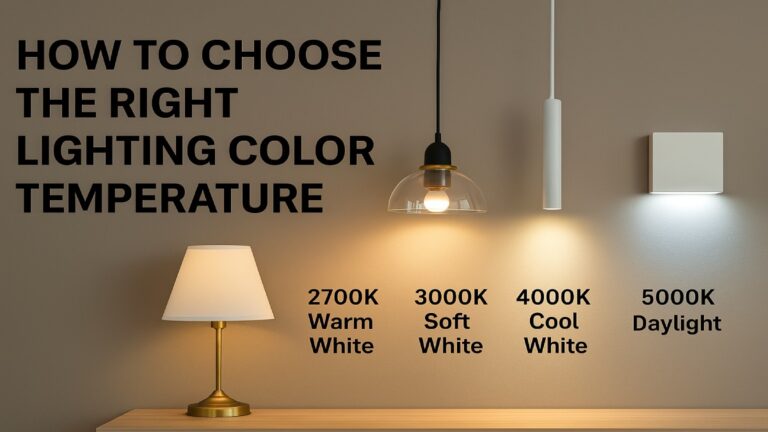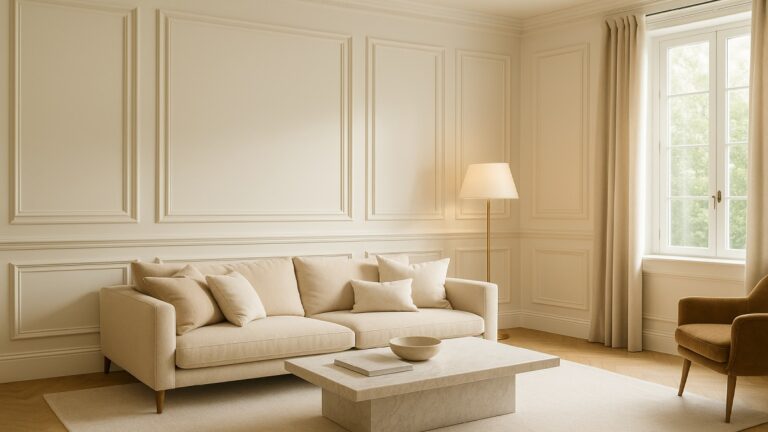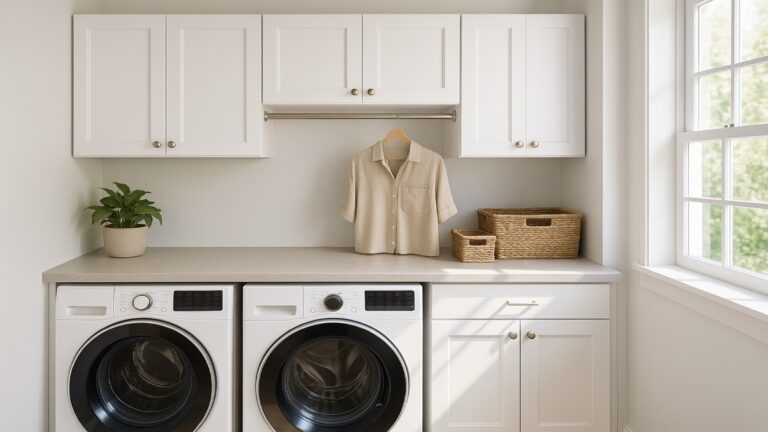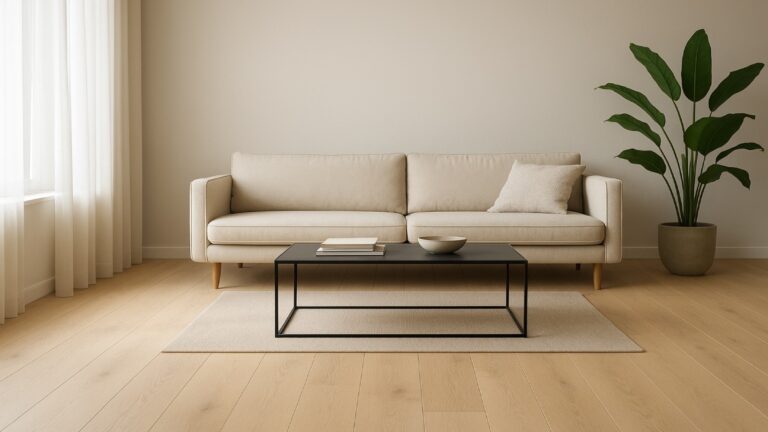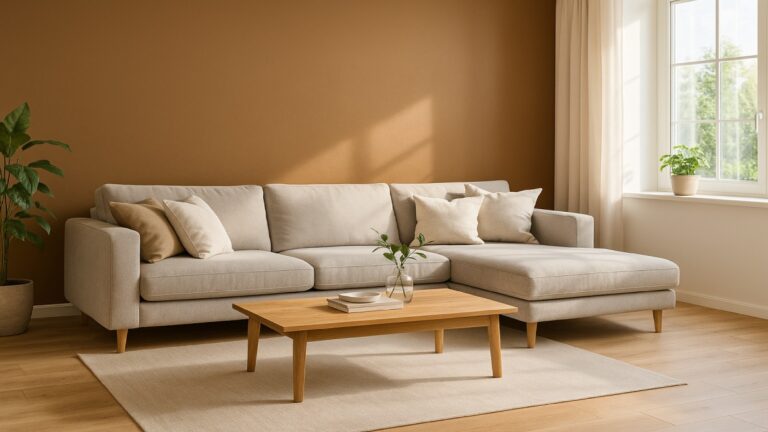Bedroom Lighting Ideas for Peaceful Sleep Spaces
Transform your bedroom into a calm, restful sanctuary with lighting that supports relaxation and better sleep quality.

Why Bedroom Lighting Shapes Rest
Lighting influences how relaxed your mind and body feel at the end of the day. The right balance of brightness and color temperature can calm your senses, slow your breathing, and prepare your brain for rest. In contrast, harsh overhead lights and blue-tinted bulbs may keep you awake longer. This guide explores bedroom lighting ideas that promote peaceful sleep, showing how a few smart adjustments can completely transform your space.
The Science of Light and Sleep
How Light Affects Melatonin
Melatonin is the hormone that tells your body it’s time to rest. Exposure to bright or cool-white light in the evening suppresses melatonin production, delaying sleep onset. Warm, dim lighting helps signal bedtime naturally. Using lamps that emit a golden or amber tone creates the right hormonal cues for winding down.
Blue Light and Circadian Rhythm
Blue wavelengths from screens and daylight-balanced bulbs mimic sunlight, tricking your brain into thinking it’s still daytime. This delays your circadian rhythm and keeps you alert. Opting for bulbs labeled “soft white,” “warm white,” or below 2700 K minimizes this effect. Smart bulbs that shift automatically from cool to warm tones in the evening are ideal for supporting a natural sleep cycle.
Ideal Color Temperature for Bedrooms
Bedrooms benefit from a color temperature between 2200 K and 2700 K. These warmer hues reduce visual strain and create a relaxing ambience. Use cooler daylight bulbs (4000 K – 5000 K) only for dressing areas or morning tasks. Consistency in color tone across fixtures also prevents visual tension and promotes harmony.
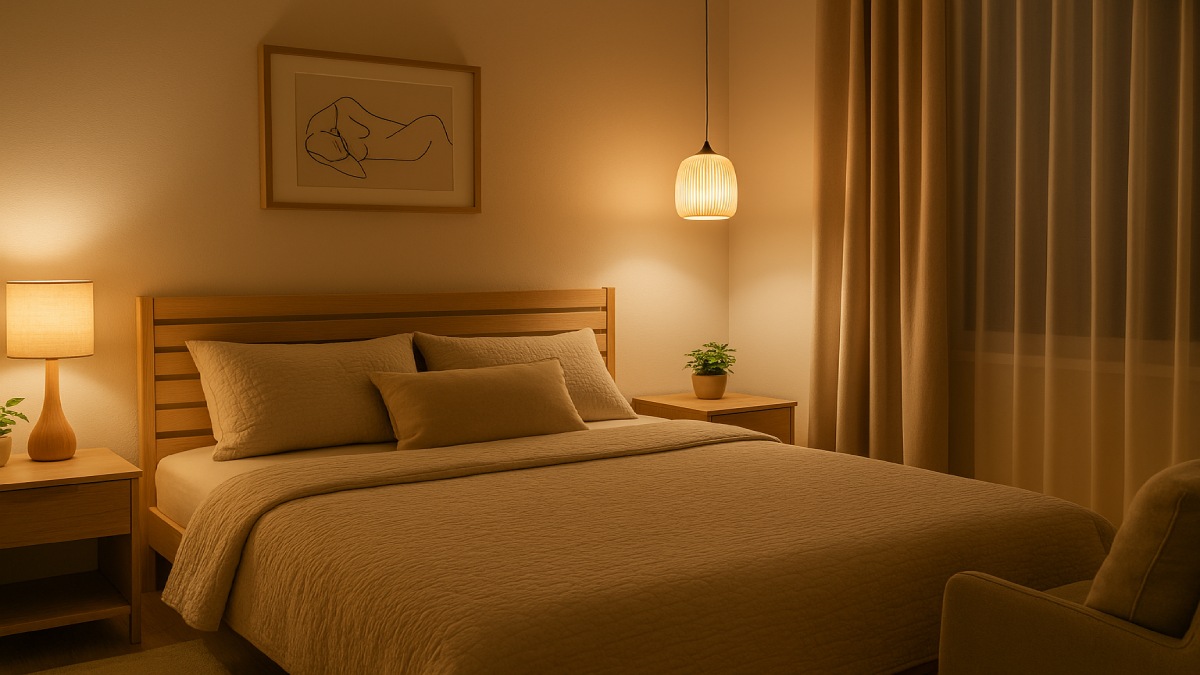
Creating the Perfect Sleep Lighting Plan
Layered Lighting Approach
A peaceful bedroom relies on layers of light rather than one overpowering source. Combine three types: ambient, task, and accent lighting. Ambient light provides general illumination, often through recessed fixtures or soft ceiling diffusers. Task lighting focuses on specific needs like reading or dressing, using bedside lamps or wall sconces. Accent lights highlight décor, such as cove LEDs or under-bed strips, adding depth and calm to the room.
Using Dimmers for Evening Relaxation
Dimmers let you gradually reduce brightness as bedtime approaches, mimicking sunset. This simple technique lowers alertness levels and signals your body to unwind. Install dimmer switches for overhead fixtures and pair them with smart bulbs for scheduled transitions—bright in the morning, soft at night.
Fixture Placement and Comfort
Where you place your lights matters as much as the bulb type. Avoid fixtures directly above the bed, which can cause glare. Instead, position wall sconces about shoulder height or hang pendant lights low on each side of the bed. This creates symmetry and allows you to control each side independently. Hidden light sources behind headboards or along baseboards keep illumination indirect and soothing.
Best Lighting Types for Peaceful Sleep
Warm LED and Smart Bulbs
Energy-efficient LED bulbs are perfect for bedrooms if you choose models with warm color temperatures. Look for features such as “warm-glow dimming” or tunable white technology. Smart options from brands like Philips Hue or LIFX allow you to set bedtime scenes that slowly fade light over 30 minutes—an effortless cue for your mind to rest.
Night Lamps and Indirect Lighting
Small lamps with fabric or frosted glass shades create gentle diffusion that relaxes your eyes. Indirect lighting—such as cove LEDs hidden behind molding or under-bed strips—adds a soft halo effect ideal for late-night movement without jarring brightness. Motion-activated night lights provide safety while keeping illumination below five lux, low enough not to disturb sleep.
Natural Light and Morning Exposure
Morning light exposure helps reset your circadian rhythm each day. If possible, open curtains immediately after waking or use sheer drapes that let daylight in. Some smart lights can simulate sunrise by gradually brightening to mimic natural dawn, gently waking you up without shock.
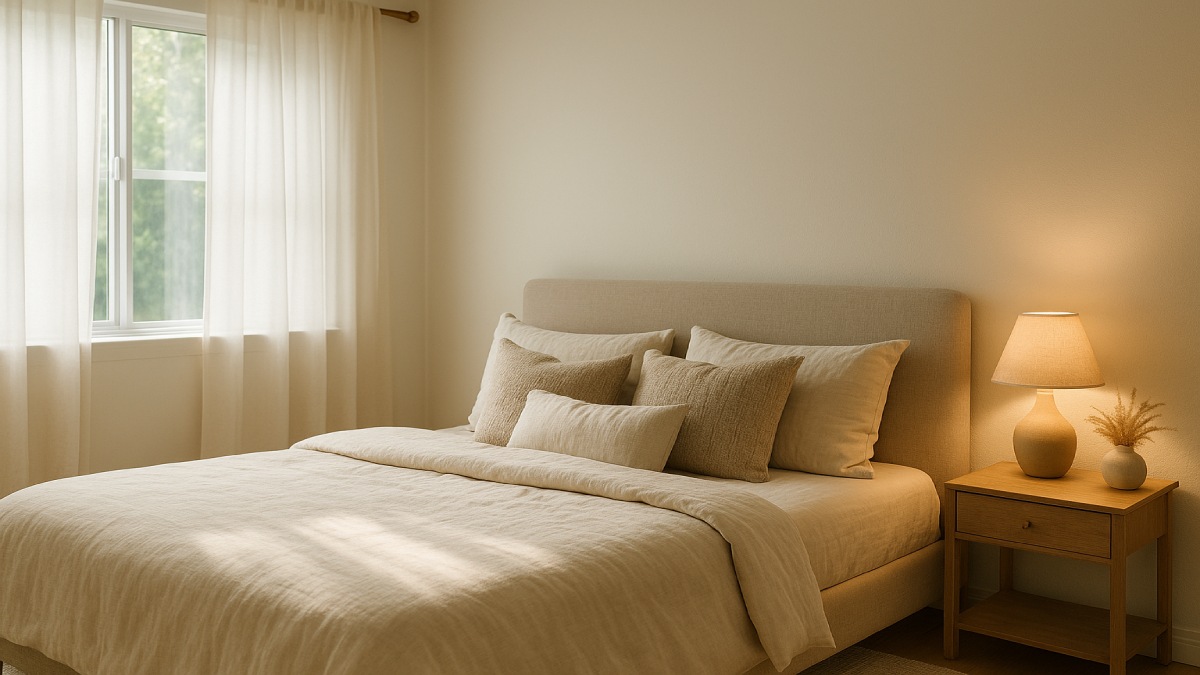
Design Inspiration: Stylish Yet Sleep-Friendly Bedrooms
Minimalist Lighting Layouts
Minimalist bedrooms emphasize simplicity and calm. Use recessed downlights or track lighting with adjustable heads to highlight textures while keeping the overall environment uncluttered. Choose matte finishes and avoid high-gloss surfaces that reflect glare.
Cozy Warm Aesthetics
To evoke warmth, pair natural materials such as wood, linen, and cotton with soft golden lighting. Table lamps with linen shades cast gentle shadows that make the room feel like a retreat. Combine this with amber fairy lights or a backlit headboard for subtle charm.
Modern Smart Bedrooms
Technology can support relaxation when used thoughtfully. Smart lighting systems let you control brightness and color via apps or voice commands. You can program scenes—one for reading, one for meditation, and another for deep sleep. These systems integrate with thermostats or sound machines for a full sensory environment.

Lighting Mistakes That Disrupt Sleep
- Overly bright overhead lights: These increase alertness and make it harder to relax.
- Cool daylight bulbs at night: Blue-white tones can delay sleep by suppressing melatonin.
- Screen glow near bedtime: Phones and tablets emit stimulating light that interferes with rest.
- Lack of dimmers or layers: One fixed brightness prevents smooth transitions to nighttime calm.
Fix these mistakes by replacing high-Kelvin bulbs with warmer ones, using lamps instead of ceiling fixtures in the evening, and limiting screen exposure an hour before bed.
Tips for Every Budget
Low-Cost Fixes
Start by swapping bulbs for soft-white LEDs or adding amber filters to existing lights. Place lamps on opposite sides of the room for even glow. Use inexpensive smart plugs to automate lights turning off after a set time.
Mid-Range Upgrades
Install dimmers, upgrade to fabric-shade bedside lamps, or add motion sensors for nighttime pathways. You can also invest in a wake-up light alarm clock that simulates sunrise, improving morning energy levels.
Premium Options
Consider a full smart-home lighting setup with tunable color temperatures and app-controlled automation. Add designer sconces with frosted diffusers or integrated LED panels that emit soft, continuous illumination along walls or ceilings.
FAQs About Bedroom Lighting for Sleep
What color light is best for sleep?
Warm amber or soft white light (below 2700 K) is best for evening use. It reduces stimulation and supports melatonin production.
How bright should bedroom lights be at night?
Keep nighttime brightness under 200 lux. Lower light levels promote calm and prevent alertness.
Can smart lights help you fall asleep?
Yes. Smart bulbs can simulate sunset or gradually dim, creating a consistent sleep cue and reducing the need for phone screens before bed.
Is warm white better than soft white?
They’re similar, but warm white leans more yellow, offering a cozier glow ideal for winding down. Soft white may appear slightly brighter but still gentle enough for relaxation.
Conclusion: Light the Way to Restful Nights
Peaceful sleep starts with mindful lighting choices. When you replace harsh glare with layered, warm-toned illumination, your bedroom transforms from a functional space into a soothing retreat. Experiment with smart dimming, indirect lamps, and natural light exposure to build a rhythm that supports both relaxation and rejuvenation. The right lighting doesn’t just decorate a room—it restores your energy every night.

